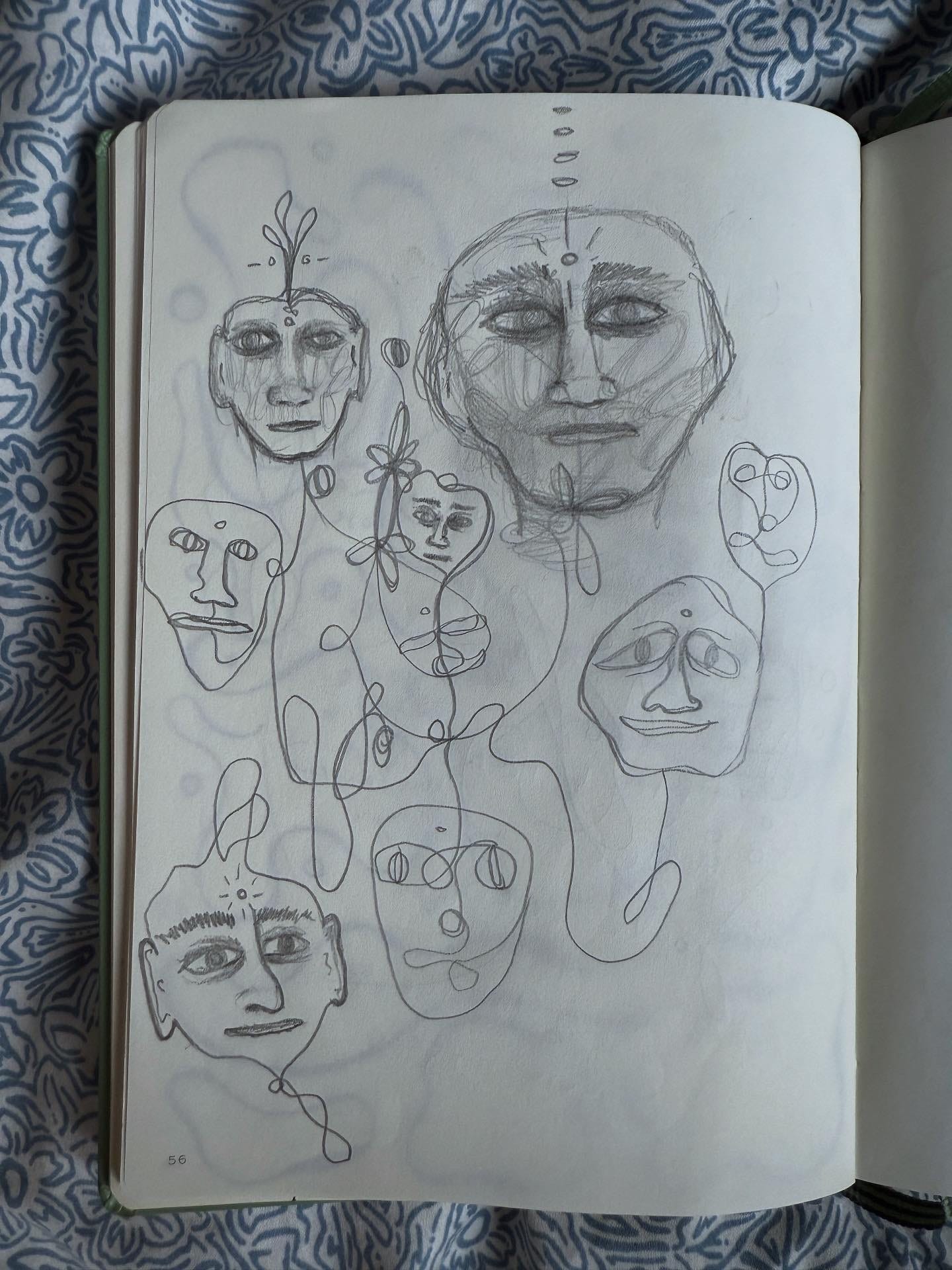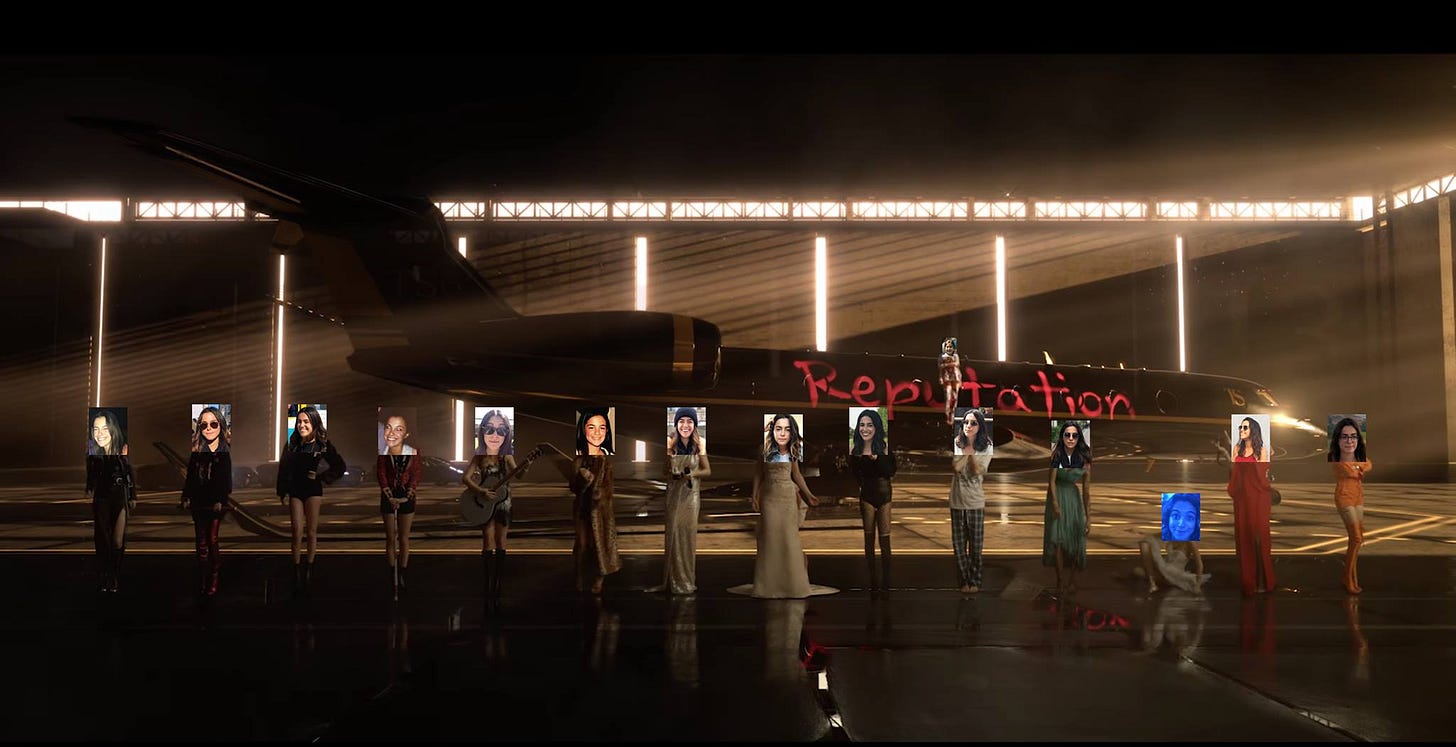The Whole Damn Sky
On learning to be all of yourself at the same time
In 2018, at the age of twenty-seven, I celebrated what my friends called my first birthday. Not my actual first, of course. Rather, it was the first time in years that I'd thrown myself a party, the first time I'd gathered people in a room specifically to celebrate the fact of my being.
The absence of birthday parties wasn't about shyness or some principled stance against cake and candles. It was something more peculiar and harder to explain: I couldn't figure out which version of myself to invite people to celebrate.
The War Within
For most of my adolescence and well into my twenties, I lived in what therapists call "self-part polarization," a clinical term that barely captures the exhaustion of being at war with yourself. Picture a conference room where every board member has a different vision for the company, and instead of finding compromise, they've split into factions, each trying to sabotage the others. That was the inside of my being.
Internal Family Systems, the therapeutic model that gave me this vocabulary, suggests we all contain multitudes: different "parts" that emerged to help us navigate life's complexities. The trouble begins when these parts stop collaborating and start competing. Without a calm, centered Self to mediate (think of it as the wise CEO who somehow got locked out of the building), these parts end up in endless tug-of-war.
In practice, this meant I was constantly toggling between extremes. The ambitious part of me would schedule dawn workouts and evening networking events, only to have the sensitive part collapse into days of hermetic withdrawal. The intellectual part would hold court at dinner parties, dazzling with wit and analysis, while the intuitive part sat silent, knowing something essential was being left unsaid. I wasn't living life so much as alternating between different people's versions of it.
The Shapeshifter's Dilemma
There are several ways to understand how I got there. Perhaps I never developed that steady, compassionate inner mediator: the Self that could hold space for all these contradictions. Or maybe I lacked what psychologists call "Self-Concept Clarity," that solid sense of who you are that stays consistent across time and context.
But I think the truth is both simpler and more universal: I desperately wanted to belong. And belonging, I'd learned early, meant becoming whatever the moment required. At work, I was sharp and unflappable. With artists, I was dreamy and spontaneous. With family, dutiful and predictable. I'd mastered the art of shape-shifting, never realizing that constantly changing form meant never being truly seen.
Society, of course, encourages this kind of self-fragmentation. We love our categories (the career woman, the creative, the caregiver) because they make the world feel manageable. When we can label someone, we feel we understand them. When we understand them, we can predict them. And when we can predict them, we feel safe. The problem is that humans aren't designed to live in single dimensions. We're constellations, not fixed stars.
The Party Planning Committee of One
So in 2018, I did something radical: I decided to throw a party for all of me. Not just the successful parts, not just the together parts, but the whole messy ensemble.
Looking back, I realize I was celebrating my eras long before Taylor Swift made it a stadium tour phenomenon. But while she was chronicling artistic evolution, I was attempting something more private and perhaps more difficult: learning to be all of myself at the same time, in the same room, with the same people watching.
The party planning itself became a kind of therapy. What music would honor both my contemplative side and my ridiculous love of pop? What food would satisfy the health-conscious part and the one that considered cheese a food group? Which friends could I trust to see me laugh too loud, think too hard, care too much, all in the span of a single evening?
The Integration
That birthday party marked the beginning of what therapists might call integration, but what felt more like a peace treaty. My various parts (the driver and the dreamer, the performer and the introvert) began to realize they weren't actually enemies. They were more like cabinet members who'd been working from different playbooks, each believing they alone knew how to keep me safe.
Once I started leading from that centered Self, that part that could hold all the others with curiosity rather than judgment, the exhausting whiplash of daily life began to ease. I stopped living in jarring transitions between different versions of myself. Leadership became less about performing authority and more about authentic presence. Relationships deepened because I was finally showing up as a whole person rather than a carefully curated selection of acceptable parts.
The Ongoing Celebration
The thing about integration is that it's not a one-time achievement. It's more like yoga: a practice that requires daily attention and occasionally leaves you tangled in uncomfortable positions. Some days, the old patterns resurface. The shape-shifter in me still occasionally takes the wheel, especially when the stakes feel high or the desire to belong feels urgent.
But now I know the way back. I know how to call a meeting of all my parts, to let each one speak their truth, to find the wisdom in their seemingly contradictory needs. And every year since 2018, my birthday has become something different, whether I'm throwing a party, stealing away for solitude, or gathering with a small circle of loved ones. The form doesn't matter anymore. What matters is that it's become my annual reminder to practice integration, a deliberate pause to honor the multiplicity rather than manage it.
We spend so much time trying to become someone (someone successful, someone lovable, someone coherent) that we forget we already are someone: a magnificent, contradictory, ever-evolving constellation of experiences and possibilities. The real work isn't choosing which star to be.
It's learning to embrace being the whole damn sky.
Emergence with Rachel Weissman is a weekly exploration of the interconnections between consciousness, technology, and planetary flourishing.
If you find this writing valuable, leave a heart ❤️, share it with a friend, and consider subscribing if you haven’t already.




